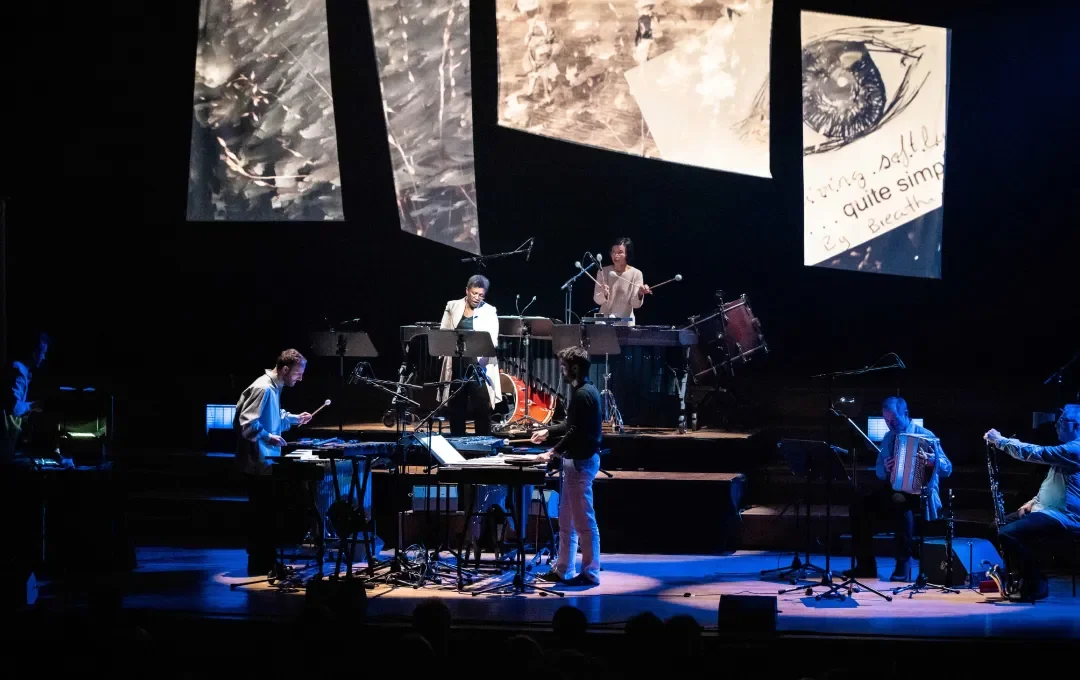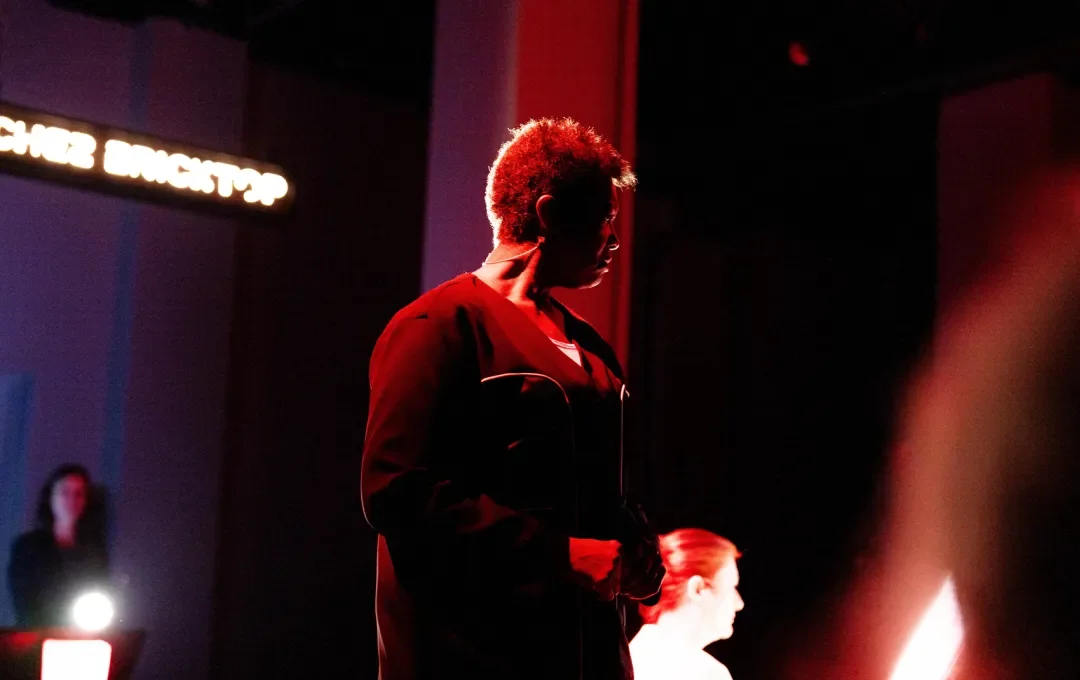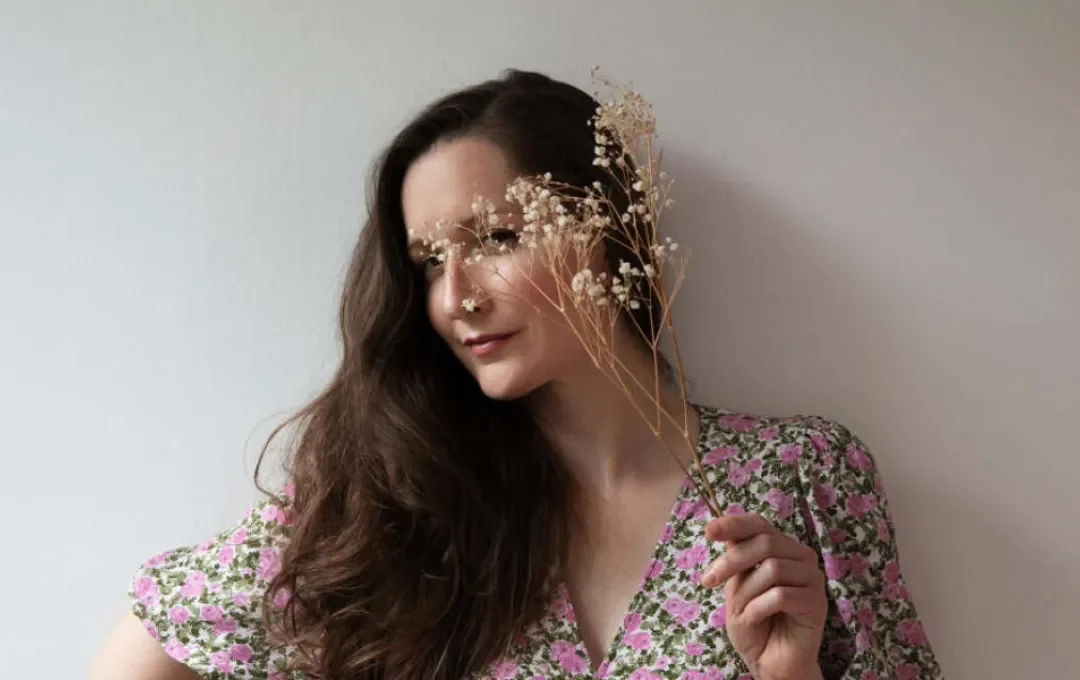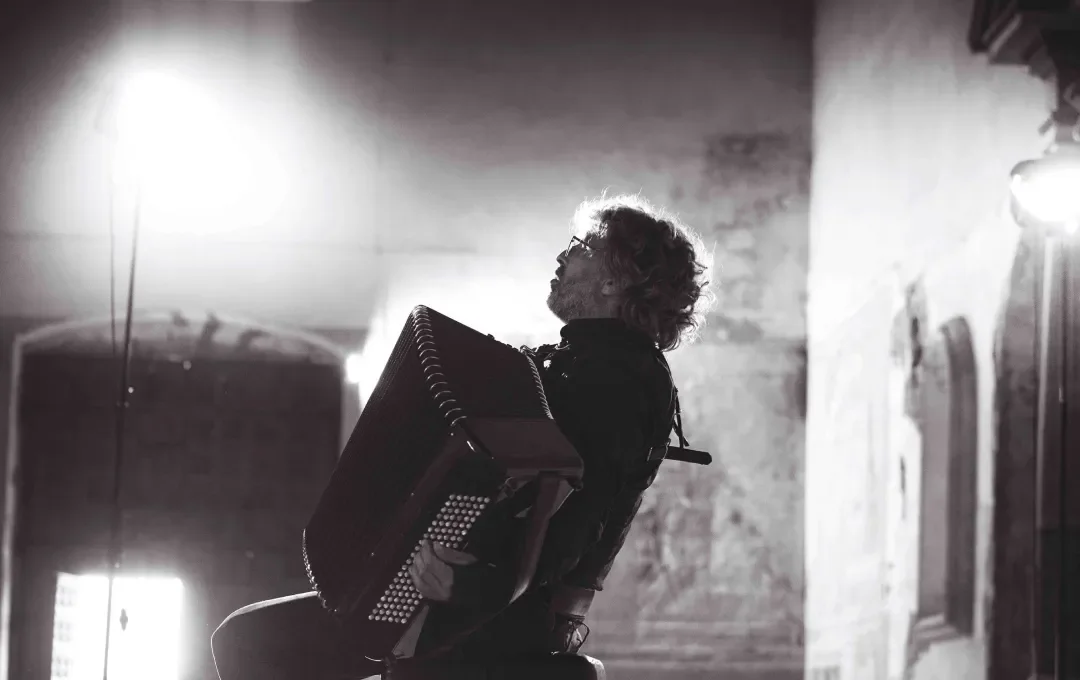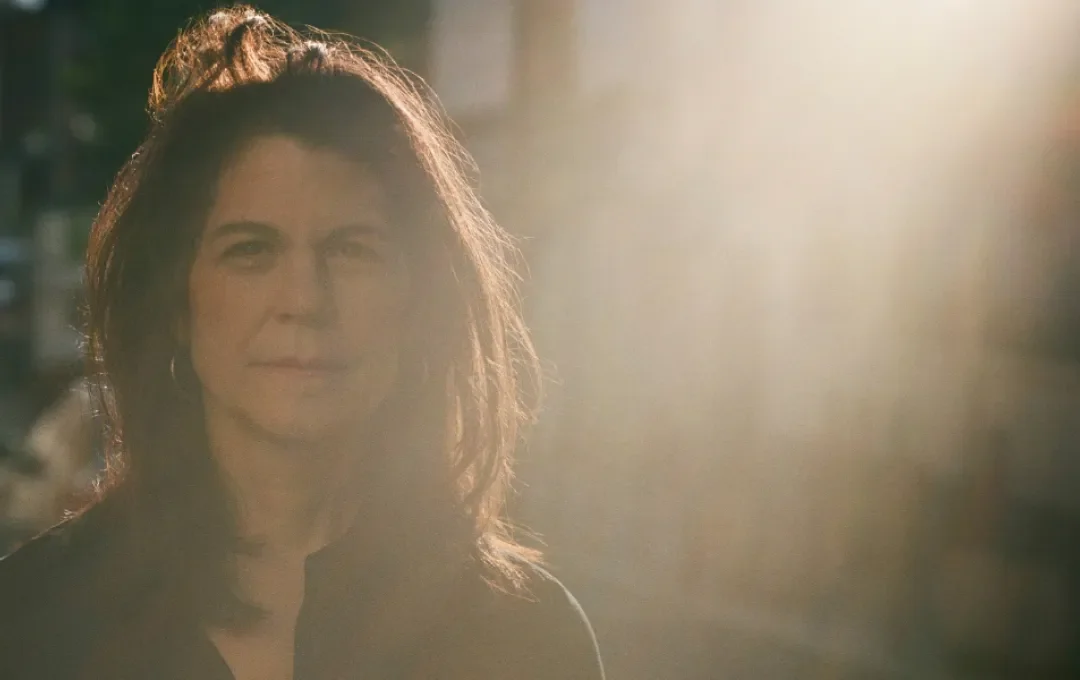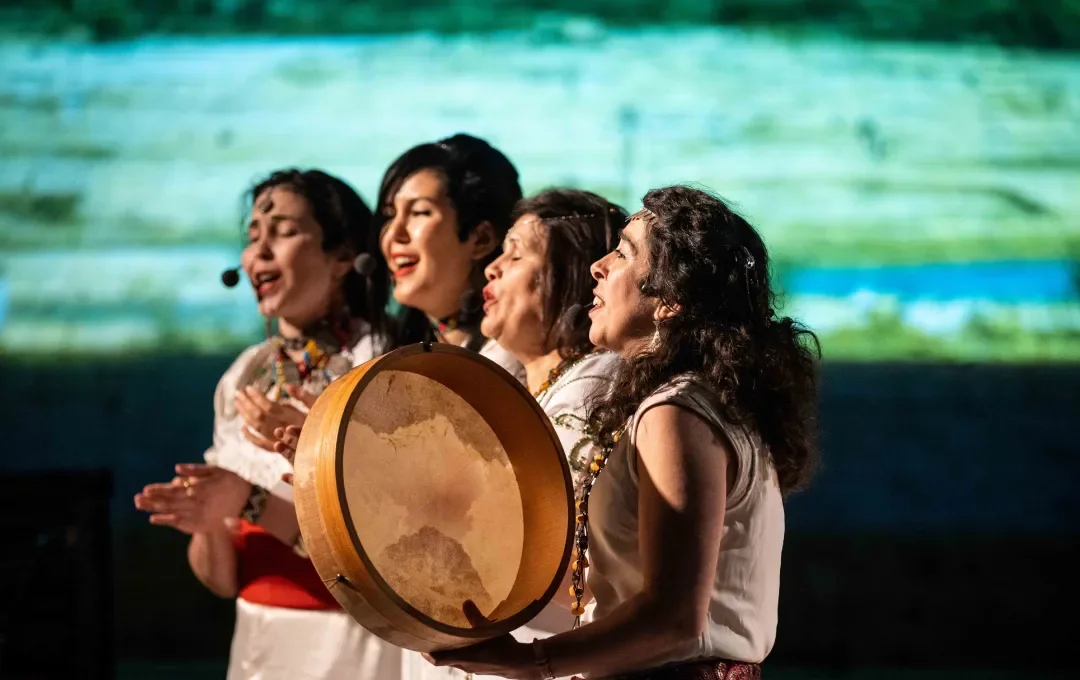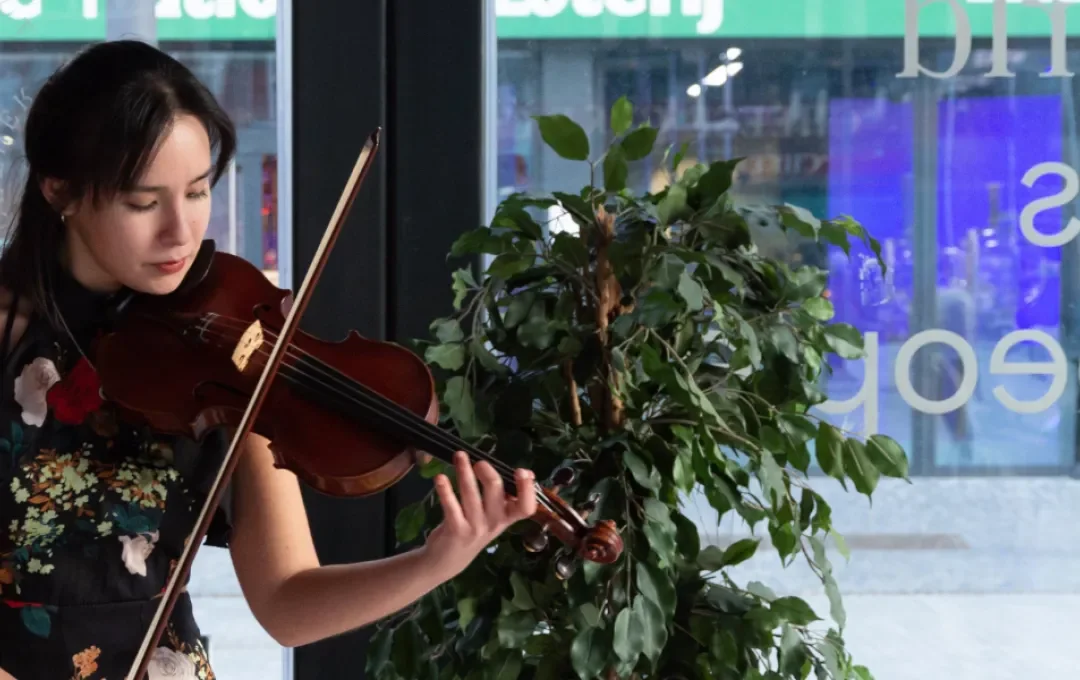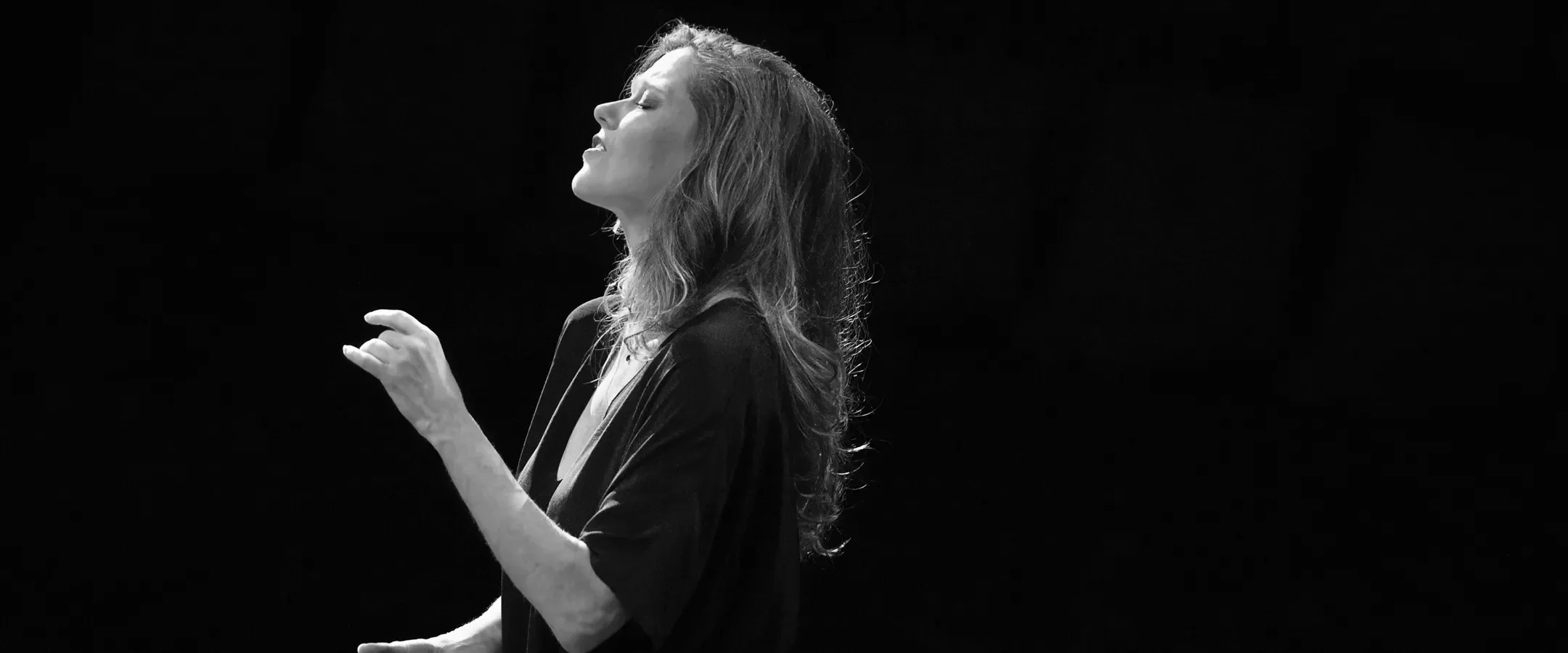
become music
discover the theme of Klarafestival 2023
Inspired by festival artist Barbara Hannigan, Klarafestival is celebrating music as a magical and fragile ‘equilibrium’. Together you enter an auditorium to form a musical community for the space of an evening. You share highs and lows, sublime musical moments or modest, rare surprises. The many, often unexpected interactions between conductor and orchestra, between musicians and audience, create a social and musical cocktail that it is impossible to reproduce. One of which everyone present that evening is a part – whether you are watching from on the stage, in the hall or behind the scenes. Together we ‘make’, or rather ‘become’ music.
A place for hearing
What if I were to tell you that you are part of a silent community? What’s more, as a member of that community you take part (sporadically or regularly) in a collective ritual. And during that ritual you play an active, musical role. Even if you do not play an instrument or declare yourself to be tone deaf. How is this possible and what exactly have you participated in? Allow me for a moment to write as I walk behind you.
You are on your way to a building, located in the city but at the same time removed from it. It is a majestic, awe-inspiring monument. It says: something important is happening here. One foot over the threshold and you are part of a community with its own set of rules. The ritual, which you know only too well or are about to experience for the first time, starts here. The person behind the desk hands you a ticket that affords you entry to a special space which lies at the heart of the building.
But first you go to an in-between space, which makes the transition from outdoors to indoors. The cloakroom attendant takes your coat. Behind the bar someone pours you a drink. Perhaps you recognise a member of the community and have a chat. Or you take sips from the glass whilst glancing around you somewhat awkwardly.
Backstage, an anecdote by the trumpet player has caused hilarity in the orchestra. In the dressing room the singer does some breathing exercises. The manager runs here and there to deal with last-minute details. The presenter and sound technician carry out a quick soundcheck.
Finally you enter the central space. The inner circle. The hundreds of seats, the upholstery, the empty stage: you sense that this is an important place. Slowly the auditorium fills. If you are entering the imposing concert hall for the first time, you search somewhat hesitantly for the seat that matches the code on your ticket.
Not only in the auditorium, but also on the stage, people are taking their seats. They are also part of the community, but dress and behave differently – all in black and with a certain concentration, they tune their instruments, while scarcely seeming to notice the hundreds of other members. Then applause breaks out: an important, new figure comes into the hall. The musicians hold their instruments in readiness. A silence falls over the auditorium. The conductor lifts his (still more often ‘his’ than ‘her’) baton
This paragraph is based on the book Musicking (1998) by ethnomusicologist Christopher Small, who understood classical music not so much as an art object, but rather as an activity.
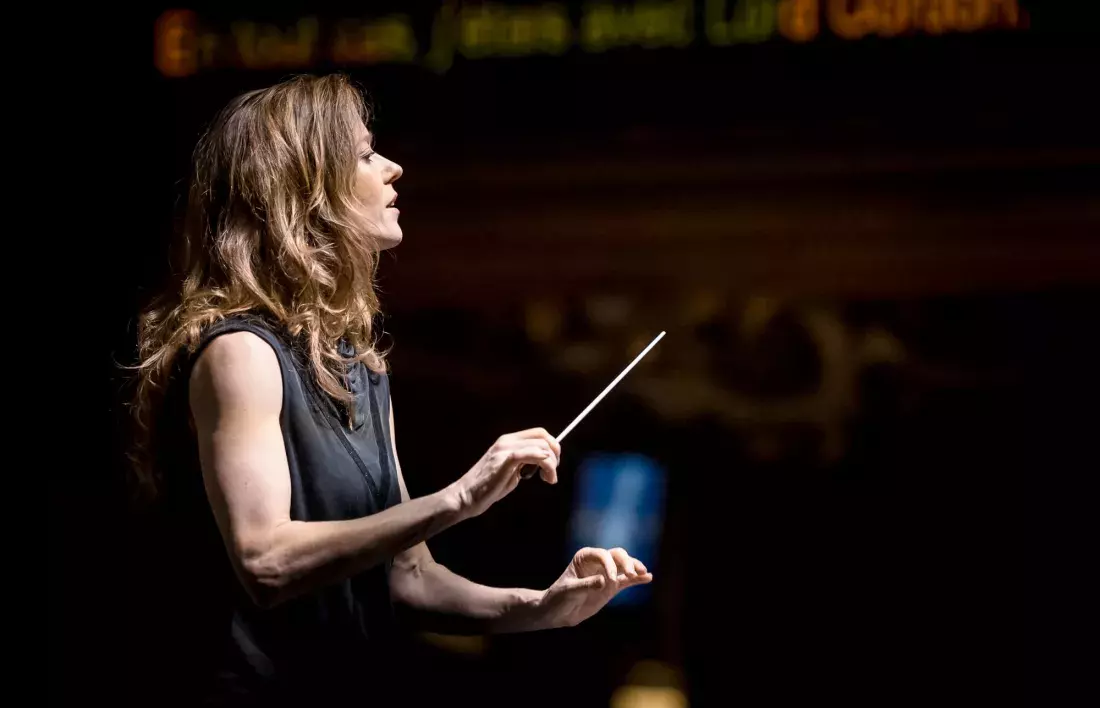
Equilibrium
At first glance, the members of this “community” have little “in common” with one another. In any case, the members look different: dressed up, in jeans and trainers, or (for those taking their place on stage) all in black. They also do not all play the same role: one stares expectantly at the stage, while another looks out over the packed auditorium. A third tops up the water of the flowers. The auditorium unites a world-famous singer, a person responsible for the flowers, a seasoned music-lover and an expectant newcomer. The chance of their being acquainted is small. Indeed, this is true of the majority of this group. They are strangers to one another, and will probably remain so. And yet they are on the point of sharing a highly personal experience with one another.
Perhaps you see a classical concert above all as “one-way traffic”: everyone is facing the same way, towards the conductor who conveys his musical interpretation from atop his rostrum. Seen thus, classical music becomes a highly individual and controlled experience. The presence of others is at best irrelevant, and at worst disturbing, with a ringing mobile phone, a rustling sweet wrapper or a well-timed coughing solo.
Or you view it in a different light, and discover a community that is together performing a musical ritual. Then the “traffic” prior to and during the concert becomes so complex and subtle that it is difficult to direct. The sometimes minor, sometimes major interactions between the conductor and the orchestra, between the orchestra members, between the performer and the (late or living) composer, between the musicians on stage and the audience in the hall, between the audience and the staff: the result of this social cocktail delivers a musical experience that is totally unique and impossible to reproduce. According to Barbara Hannigan, when everything is exactly right we achieve a magical balance or equilibrium: “Any great performance is a sacred equilibrium achieved between all the characters involved: singers, instrumentalists, conductor, composer, text, audience. There is a dynamic flow within that state of equilibrium, which is rare and breathtaking.”
Lalina Goddard
photo (up) © Maarten Laupman / photo (middle) © Hans vander Woerd
